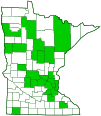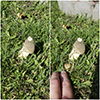Common Stinkhorn
(Phallus impudicus)
Conservation • Description • Habitat • Ecology • Distribution • Taxonomy
Conservation Status |
|
|||||||
| IUCN Red List | not listed |
|||||||
| NatureServe | not listed |
|||||||
| Minnesota | not listed |
|||||||
Description |
||
Common Stinkhorn occurs across the United states but is most common west of the Mississippi River. It is found in the summer and fall in deciduous woods, parks, lawns, and gardens. It grows on the ground, singly or in clusters. It is saprobic, obtaining its nutrients from decaying wood. The fruiting body at first is whitish to yellowish, egg-shaped, 1½″ to 2⅜″ tall, and 1¼″ to 2″ wide. It resembles a puffball at least partially submerged in the ground. It is attached to the ground or other substrate by thread-like, branching, similarly colored strands (mycelium). Inside the “egg” there is a gelatinous layer, an olive-green spore mass (gleba), and all of the fully-formed parts of the mature stinkhorn. When conditions are right the “egg” ruptures and expands rapidly. In one or two days it produces a distinctly phallic structure with a stalk and thimble-like head. The rapid expansion is possible because all of the parts are fully formed and compressed inside the “egg”, and because the individual cells elongate, rather than new cells being produced. As the stinkhorn expands the gelatinous layer mixes with the spore mass producing a shiny, putrid slime that covers the cap. The foul-smelling slime is irresistible to flies, which feed on it, lay their eggs in it, and transfer spores when they fly to other stinkhorns. It is a smelly nuisance to homeowners who find the mushroom under their wood deck. The stalk is white to yellowish-white, spike-like, hollow, spongy, fragile, 4″ to 11¾″ tall, and 1½″ to 2″ in diameter. At the base of the stalk the remnants of the ruptured “egg” (volva) is white. The cap is thimble-like, ¾″ to 1½″ in height, and ⅝″ to 1½″ in diameter. There is a white, circular opening at the top where it attaches to the stalk. There are sometimes remnants of a membranous veil attached to the bottom of the cap. At first, the cap is covered with a thick, slimy or gluey, shiny, olive-green to olive-brown, spore-bearing mass (gleba). The gleba has a strong, putrid odor, repulsive to humans but irresistible to flies. When it is carried off by flies and/or washed off by rain it reveals a whitish, pitted and ridged (reticulate) surface. |
||
Similar Species |
||
Habitat and Hosts |
||
Deciduous and coniferous woodlands, parks, lawns, gardens |
||
Ecology |
||
Season |
||
Summer and fall |
||
Distribution |
||||
|
Sources |
|||
| 6/19/2023 | ||||
Occurrence |
||||
Widespread. More common in western United States |
||||
Taxonomy |
|||
| Kingdom | Fungi (Fungi) | ||
| Subkingdom | Dikarya | ||
| Phylum | Basidiomycota (Basidiomycete Fungi) | ||
| Subphylum | Agaricomycotina (Higher Basidiomycetes) | ||
| Class | Agaricomycetes (Mushrooms, Bracket Fungi, Puffballs, and Allies) | ||
| Subclass | Phallomycetidae | ||
| Order | Phallales (stinkhorns and allies) | ||
| Family | Phallaceae (stinkhorns) | ||
| Genus | Phallus | ||
Synonyms |
|||
Ithyphallus impudicus Morellus impudicus Phallus foetidus Phallus volvatus |
|||
Common Names |
|||
Common Stinkhorn Stinkhorn |
|||
Glossary
Gleba
The inner spore-bearing mass of puffballs, earthstars, and stinkhorns. The term is also used to refer to the spore-bearing slime covering the head of a stinkhorn.
Mycelium
The vegetative part of a fungus; consisting of a mass of branching, thread-like hyphae, through which a fungus absorbs nutrients from its environment; and excluding the fruiting, reproductive structure.
Saprobic
A term often used for saprotrophic fungi. Referring to fungi that obtain their nutrients from decayed organic matter.
Volva
Also called cup. A cup-like covering at the base of a mushroom stem, sometimes buried. In Amanita, Volvariella, and some other mushrooms, it is the remnants of the universal veil ruptured by the mushroom pushing through. In Phallales it is the remnants of the ruptured peridium.
Visitor Photos |
|||||
Share your photo of this fungus. |
|||||
| This button not working for you? Simply email us at info@MinnesotaSeasons.com. Attach one or more photos and, if you like, a caption. |
|||||
Amanda Ladd |
|||||
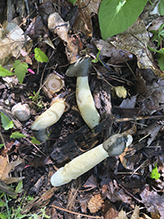 |
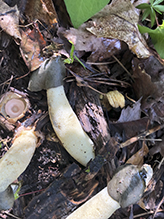 |
||||
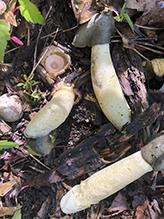 |
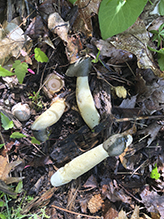 |
||||
Luciearl |
|||||
At first finding this egg like fungus. I truly thought it was an egg. After tearing away a portion of the outer skin, I still thought the gelatinous substance inside seemed like an egg. Then my son showed me it had a stem underneath. Puzzling. Hope we can find out what this interesting fungus might be. |
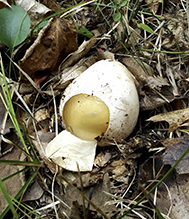 |
||||
Not sure if these were the same kind or just different stages. Found in same location. |
|||||
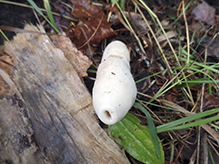 |
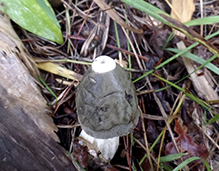 |
||||
Angie |
|||||
Found at park in the wood chips. |
|||||
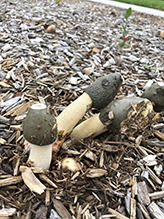 |
|||||
Anonymous 2 |
|||||
Found in yard. Popped up randomly 16hrs after mowing & heavy rain |
|||||
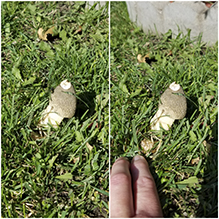 |
|||||
Lucy Morrissey |
|||||
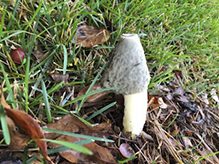 |
 |
||||
MinnesotaSeasons.com Photos |
|||||
|
|||||

Slideshows |
||

Visitor Videos |
|||
Share your video of this fungus. |
|||
| This button not working for you? Simply email us at info@MinnesotaSeasons.com. Attach a video, a YouTube link, or a cloud storage link. |
|||
Other Videos |
|||
| Phallus impudicus timelapse HD LS A |
|||
About
Published on Dec 2, 2015 El falo hediondo (Phallus impudicus) es un hongo que demuestra que la naturaleza es una gran imitadora del hombre, o quizás al revés. Su olor a cadáver en descomposición se percibe a varios metros de distancia y atrae a las moscas que se posan en su gleba, contribuyendo de esta manera a la dispersión de sus esporas. Google Translate: The smelly phallus (Phallus impudicus) is a fungus that shows that nature is a great imitator of man, or perhaps the other way around. Its decomposing corpse smell is perceived several meters away and attracts flies that perch on its glebe, contributing in this way to the dispersal of its spores. |
|||
| Phallus Impudicus Nature Check |
|||
About
Published on Sep 15, 2015 |
|||
| The Common Stinkhorn, Phallus impudicus Wild Food UK |
|||
About
Published on Aug 26, 2014 Tasting the common stinkhorn. Phallus impudicus. |
|||
| Flies on a Stinkhorn (Phallus impudicus) Phil Champion |
|||
About
Published on Jul 8, 2012 At Edgbaston Pool Nature Reserve, Birmingham. https://en.wikipedia.org/wiki/Phallus_impudicus |
|||
| Common Stinkhorn Mike's Nature Journal |
|||
About
Published on Nov 19, 2017 There are many varieties of Stinkhorns . I believe this is a Common Stinkhorn, The "egg" form is actually edible . |
|||


Created 8/29/2018
Last Updated:
